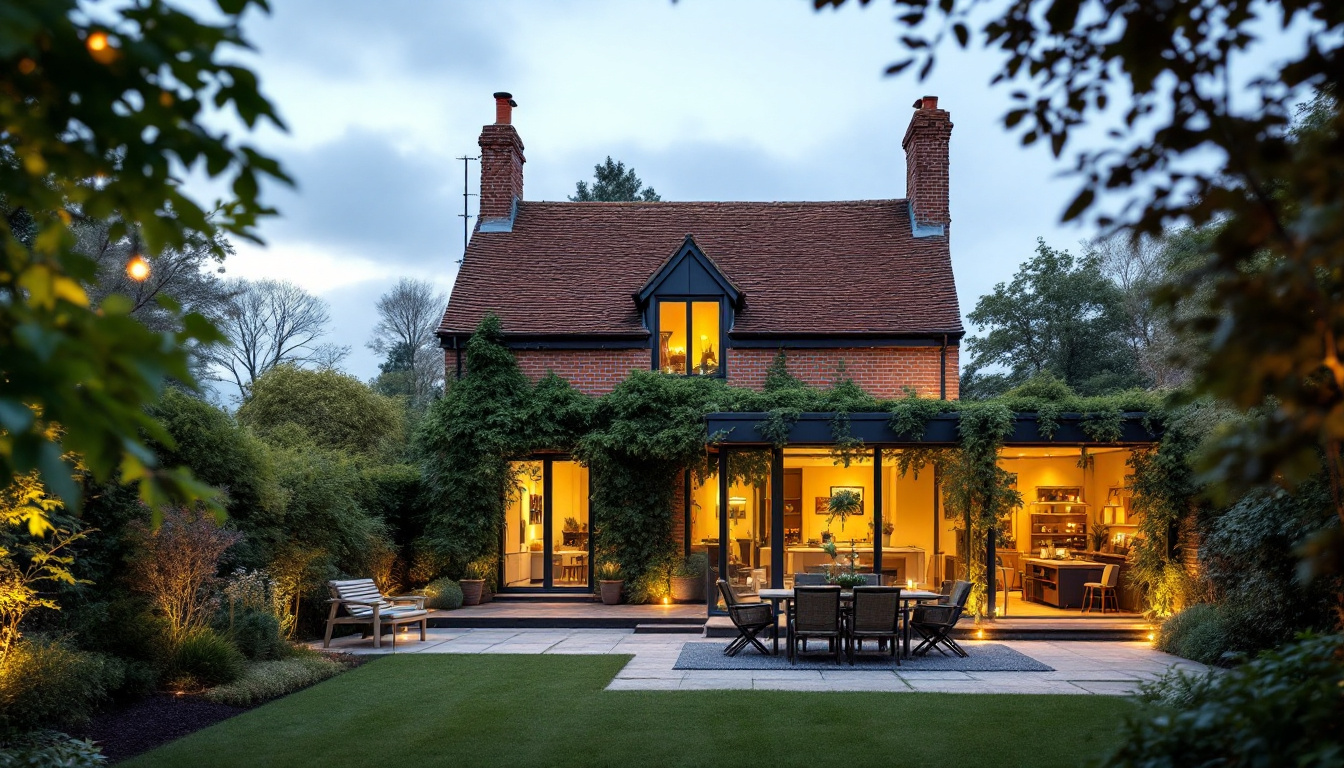How Much Does a Rear Extension Cost for a Cottage?
Adding a rear extension to a cottage can be a fantastic way to increase living space, enhance functionality, and boost the property’s value. However, understanding the costs involved is crucial before embarking on such a project. Rear extensions vary widely in price depending on factors like size, location, materials, and design complexity. This guide breaks down what you can expect to pay for a rear extension on a cottage, helping you plan your budget with confidence.
Understanding the Basics: What Influences Rear Extension Costs?
When considering a rear extension for a cottage, it’s important to recognize that costs are not one-size-fits-all. Several key factors influence the final price:
- Size of the Extension: Larger extensions naturally require more materials and labour, increasing costs.
- Type of Extension: Whether it’s a simple single-storey extension or a more elaborate multi-storey addition affects pricing.
- Quality of Finish: High-end finishes and bespoke features will push the budget higher.
- Location: Building in London or other high-demand areas can add a premium to costs.
- Complexity of Design: Unique architectural features or challenging site conditions can increase expenses.
As one industry expert noted, “The cost of a rear extension will depend on the type of extension you choose to have, its size and the quality of finish.” This means careful planning and clear priorities are essential to keep your project on track financially.
Additionally, it's crucial to consider the potential impact of local regulations and planning permissions, which can vary significantly from one locality to another. In many cases, obtaining the necessary approvals can add both time and expense to your project. Engaging with a knowledgeable architect or builder who understands the local rules can save you from unexpected delays and costs. Furthermore, the choice of materials can also play a pivotal role in the overall budget. Sustainable or eco-friendly materials, while often more expensive upfront, can lead to savings in energy costs over time and may even qualify for certain grants or incentives.
Moreover, the timing of your project can influence costs as well. For instance, construction prices can fluctuate based on market demand, seasonal weather conditions, and even the availability of skilled labor. Planning your extension during off-peak seasons might yield better rates and ensure that you have access to the best contractors. It's also worth considering how the extension will integrate with the existing structure of your cottage, as this can affect both aesthetic appeal and structural integrity, potentially leading to additional costs if not addressed early in the design phase.
Typical Cost Ranges for Rear Extensions in the UK
For a single-storey rear extension, the average cost in the UK typically falls between £1,500 and £2,500 per square metre. This range covers most standard builds with reasonable finishes and materials. To put this into perspective, a 20m² extension might cost between £30,000 and £50,000 on average.
However, costs can vary notably depending on your location. For example, in London, prices tend to be approximately 9% higher than in other parts of the UK. This means that a 20m² rear extension in London could cost between £70,000 and £110,000, reflecting the premium on labour, materials, and planning requirements in the capital.
Smaller vs Larger Extensions
Smaller side-return extensions or modest rear additions might come in at the lower end of the scale, sometimes under £25,000. Larger or more complex projects, especially those involving multi-storey builds or high-spec finishes, can easily exceed £100,000.
For cottages, which often have limited space and unique architectural features, the size and complexity of the extension will heavily influence the budget. It’s worth noting that even within the same size bracket, the cost can fluctuate depending on how much structural work is needed and the finishes chosen.
Why Rear Extensions Are a Smart Investment for Cottages
Extending the rear of your cottage is not only about increasing space but also about adding value to your home. Compared to alternatives like conservatories, rear extensions generally offer better returns on investment.
Research shows that single-storey extensions can add up to £18,000 in value, whereas conservatories typically add around £16,000, especially if the conservatory is outdated. This makes rear extensions a more worthwhile option if you’re looking to improve your home’s market appeal.
Moreover, cottages often have charming but compact layouts. A well-designed rear extension can open up the living space, create a modern kitchen or dining area, and improve natural light—all of which appeal to future buyers.
Breaking Down the Costs: What Are You Paying For?
Understanding the components of your rear extension budget helps you make informed decisions. Here’s a typical cost breakdown:

- Planning and Design Fees: Architectural drawings, planning permission, and structural engineering can add several thousand pounds depending on complexity.
- Construction Materials: Bricks, mortar, timber, insulation, windows, and roofing materials form the bulk of material costs.
- Labour: Skilled tradespeople such as builders, electricians, plumbers, and plasterers will be required throughout the build.
- Finishes and Fixtures: Flooring, paint, kitchen fittings, lighting, and heating systems can vary greatly in price based on quality.
- Additional Costs: Groundworks, drainage, and any unexpected structural work (like underpinning or dealing with damp) can add to the budget.
On average, a rear extension might cost between £25,000 and £40,000 for a standard-sized project, but this can increase significantly with higher-end finishes or complex designs.
Regional Considerations: Why Location Matters
Building a rear extension in London or the South East is generally more expensive than in other parts of the UK. Labour costs, material prices, and planning regulations tend to be more demanding in urban areas, pushing prices up by around 9% compared to the national average.
For cottage owners outside major cities, this can mean more affordable options without compromising on quality. However, rural or conservation area properties might face additional planning restrictions or requirements, which can also impact costs and timelines.
Tips for Managing Your Rear Extension Budget
To keep your project affordable and avoid surprises, consider these practical tips:

- Get Multiple Quotes: Always obtain at least three detailed quotes from reputable builders to compare pricing and services.
- Plan Thoroughly: Having clear plans and specifications reduces the risk of costly changes during construction.
- Choose Materials Wisely: Balance aesthetics with durability and cost-effectiveness to get the best value.
- Consider Phased Builds: If budget is tight, consider completing the extension in stages.
- Factor in Contingencies: Set aside at least 10% of your budget for unexpected expenses.
Final Thoughts
Adding a rear extension to your cottage is a significant investment that can transform your living space and increase your property’s value. While costs vary depending on size, location, and design, a typical single-storey rear extension in the UK costs between £1,500 and £2,500 per square metre. For a 20m² extension, this translates to roughly £30,000 to £50,000 outside London, with prices rising to £70,000 to £110,000 in the capital.
By understanding the factors that influence costs and planning carefully, cottage owners can create beautiful, functional extensions that suit their needs and budgets. Whether you’re looking to add a new kitchen, dining area, or simply more living space, a rear extension remains one of the most effective ways to enhance your home.


